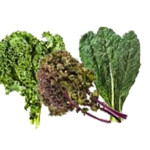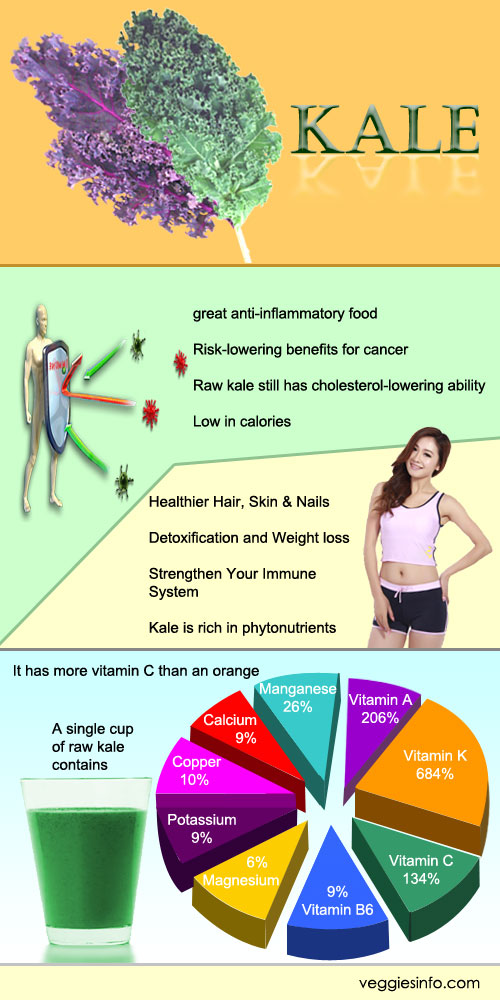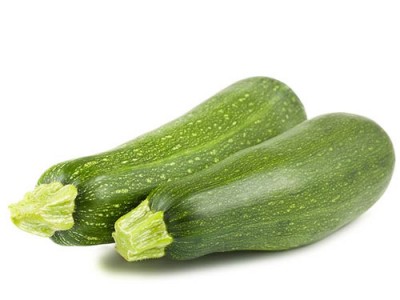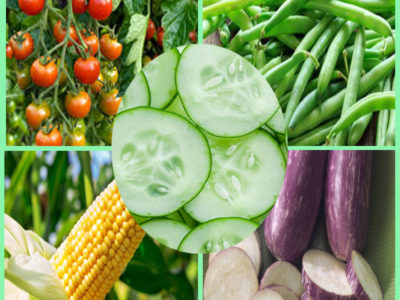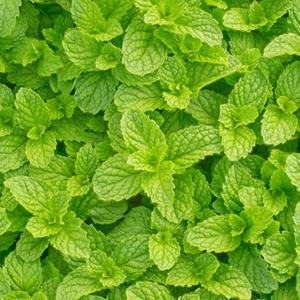
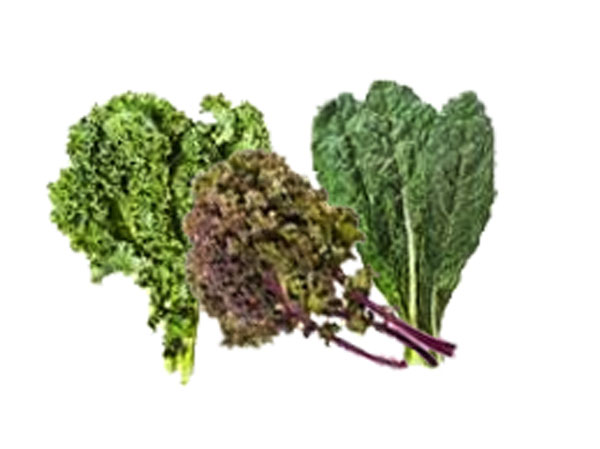
Kale Uses , Nutrition , Health Facts
About Kale
Scientifically known as Brassica oleracea. It belongs to the acephala group that is relatively close to spring greens and collard greens. This leafy vegetable has been cultivated for more than 2000 years in European country it was highly consumed during middle ages. It is an important vegetable in colder regions because of its resistance to extreme climate and it can survive through frost. It became very popular when people started consuming cabbage and broccoli even though they do not appear to look like the same vegetable; they belong to the same family. By the advent of 5th century long leaved cabbages soon got coined under the term acephala which means cabbage without head.It was cultivated as a staple crop of Scotland because of its extremely cold climate and for its stern hard leaves. They are preserved in barrels using salt and are also feed as fodder to livestock of that region. They are cultivated in home gardens and almost every house is seen to be growing kale in their backyard. Apart from being used as a vegetable in various delicacies kale is also used as a decorative flower; owing to its pink purple and yellow flowers gardeners take pride in cultivating kale to add colour and beauty to their garden. These kales are safe to consume as much as the green Kale.
Kale Nutrition Facts
- A single cup of raw kale contains Vitamin A 206% Vitamin K 684% Vitamin C 134% Vitamin B6 9% .
- Manganese 26% Calcium 9% Copper 10% Potassium 9% Magnesium 6%.
- It has more vitamin C than an orange.
Kale Benefits
- Great anti-inflammatory food.
- Risk-lowering benefits for cancer.
- Raw kale still has cholesterol-lowering ability.
- Detoxification and Weight loss.
- Strengthen Your Immune System.
- Healthier Hair, Skin & Nails.
- Kale is rich in phytonutrients, Low in Calories.
Kale Interesting Facts
Kale has been Cultivated for More than 2,000 Years.popular in Europe during the Roman time and Middle Ages, it Arrived in the United States in the 17th Century.`
| Principle | Nutrient Value | Percentage of RDA |
|---|---|---|
| Energy | 50 Kcal | 2.5% |
| Carbohydrates | 10.01 g | 8% |
| Protein | 3.30 g | 6% |
| Total Fat | 0.70 g | 3% |
| Cholesterol | 0 mg | 0% |
| Dietary Fiber | 2.0 g | 5% |
| Vitamins | ||
| Folates | 29 µg | 7% |
| Niacin | 1.000 mg | 6% |
| Pantothenic acid | 0.091 mg | 1.5% |
| Pyridoxine | 0.271 mg | 21% |
| Riboflavin | 0.130 mg | 10% |
| Thiamin | 0.110 mg | 9% |
| Vitamin A | 15376 IU | 512% |
| Vitamin C | 120 mg | 200% |
| Vitamin K | 817 µg | 681% |
| Electrolytes | ||
| Sodium | 43 mg | 3% |
| Potassium | 447 mg | 9.5% |
| Minerals | ||
| Calcium | 135 mg | 13.5% |
| Copper | 0.290 mg | 32% |
| Iron | 1.70 mg | 21% |
| Magnesium | 34 mg | 8.5% |
| Manganese | 0.774 mg | 34% |
| Phosphorus | 56 mg | 8% |
| Selenium | 0.9 µg | 1.5% |
| Zinc | 0.44 mg | 4% |
| Phyto-nutrients | ||
| Carotene-β | 9226 µg | — |
| Crypto- xanthin-β | 0 µg | — |
| Lutein- zeaxanthin | 39550 µg | — |
Kale belongs to the cabbage family which is well known for its high nutrition value; a cup of raw kale consists of 33 calories and 3 grams of protein. This leafy green is rich vitamin A, Vitamin C and Vitamin K. Vitamin A is essential for good eyesight, aging adults should consider adding kale to their daily diets. Vitamin C that is rich in anti oxidants and it helps in smooth functioning of the body cells. Kale is also known as the richest source of vitamin c as kale consist 3 times more proteins than spinach and more vitamin c than an orange. Kale is a cruciferous plant and like its relative plants it is vested with anti cancer properties and anti oxidant properties that prevents the body from falling prey to life endangering diseases such as breast cancer, prostate cancer and colon cancer. Apart from hosting these vital nutrients kale also has the benefit of various other nutrients such as iron, manganese, magnesium, lutein and zeaxanthin are a few to mention.
How To Enjoy Kale
As kale aids in weight loss it is highly consumed by weightwatchers and there are numerous ways to prepare kale. Add raw kale in salads, use it instead of lettuce in sandwiches, sautéed kale in olive oil and garlic and serve it alongside a steak or turkey.It is used to make pesto sauce for pasta; it is also used in a pureed form and served as a cold
soup.It tossed with watermelon and mozzarella cheese makes it a nice afternoon snack.
It might be less known to people but its gaining a lot of popularity in culinary world because of its robust flavours and health benefits.

